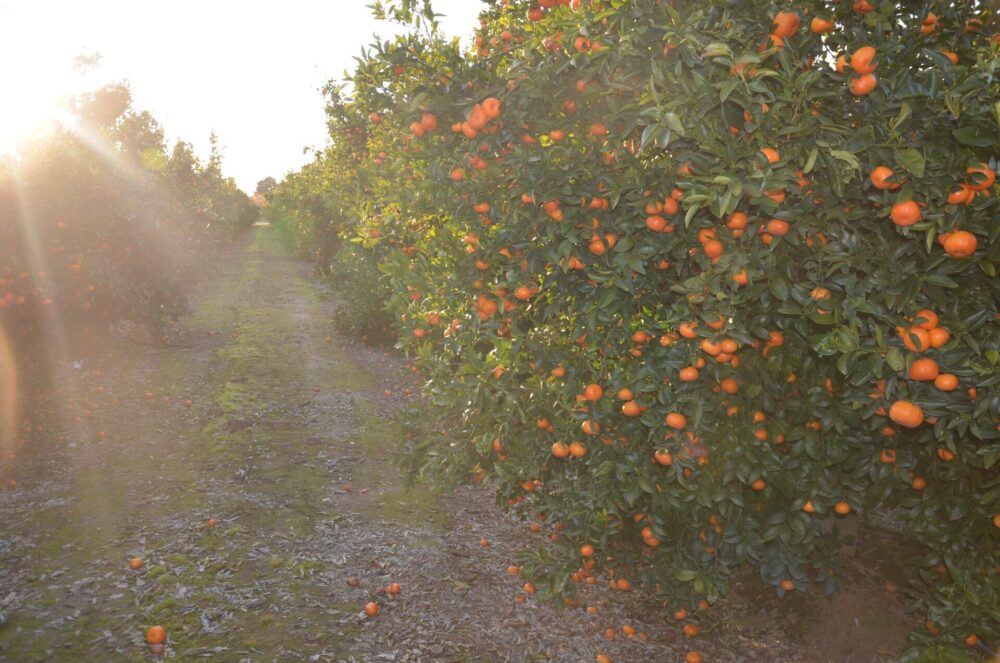Editor’s Note: John Kempf is founder and chief vision officer of Advancing Eco Agriculture (AEA), and one of the leading thinkers in regenerative agriculture. AEA recently led precision ag startup Croptix‘ seed round, which just had its first close. Here Kempf writes in-depth about why AEA invested and how Croptix could change the field of plant monitoring.
Plant nutrition plays a vital role in the success of agriculture and the quality of our food supply. However, the fertilizer and agronomy industry has long struggled with insufficient data and a lack of accurate information, leading to fertilizer misapplication and significant challenges in fruit and grain quality. At Advancing Eco Agriculture (AEA), we have found that more than 80% of yield losses and the subsequent susceptibility to diseases and insects can be attributed to fertilizer mismanagement.
Extensive research in the peer-reviewed literature has established the link between disease susceptibility and specific nutritional imbalances associated with each disease. By managing a crop’s nutritional integrity, it is possible to significantly reduce or even eliminate pest susceptibility. However, to effectively utilize nutrition management as a disease prevention tool, it is necessary to measure plant nutrient balance in close to real-time.

The Shortfalls of Leaf Tissue Analysis
The current industry standard for plant nutrition monitoring is dry matter leaf tissue analysis in a laboratory. Growers and agronomists typically collect leaf samples and ship them to a laboratory only when a problem arises or on a sporadic basis throughout the crop cycle. Waiting for results from the laboratory can take a week or longer, causing delays in decision-making. The costs associated with sample collection, shipping logistics, and turnaround time further restrict the frequency and accessibility of sampling.
An additional challenge with tissue analysis is the data doesn’t always accurately reflect what is occurring in the field. A rapidly growing crop may not be obtaining enough calcium to maintain healthy cell structure for newly formed cells, while all the previously formed cells contain adequate calcium. A tissue analysis will continue to show adequate calcium levels for 3-4 weeks, until the new growth becomes deficient enough for the shortfall to show up.
Because of these logistical challenges and data reliability frustrations, routine tissue testing is not a standard practice for most growers. As a result, the valuable information around nutritional balance as a tool to manage pest susceptibility remains relatively unknown and under-appreciated.
Leaf sap analysis improves data accuracy
As a result of our dissatisfaction with tissue analysis, we shifted entirely to lab-based leaf sap analysis in our consulting work at AEA, beginning our initial testing in 2011.
Leaf sap analysis is much more sensitive and accurate than tissue analysis, and we could observe nutrient imbalances 3-4 weeks earlier than with a standard tissue analysis. No longer was there a delay in deficiencies showing up in the data. The data tracked with the field observations much more accurately than when we were using tissue analysis.
We also began collecting samples consistently, every fourteen days through the crop growing season for most crops. The insights revealed by this accurate and consistent testing have been startling.
This type of testing has revealed numerous crop quality and pest susceptibility problems stemming from fertilizer misapplication. Excessive fertilizer usage and improper timing have been revealed as common errors, accounting for more than 80% of crop quality issues in the crops we have tested. Additionally, sap analysis has shed light on the overuse of fertilizers, highlighting the products that truly enhance a crop’s nutritional integrity and those that do not.
While sap analysis resolves the data accuracy challenge’s presented by the use of tissue analysis, the logistical challenges of sample collection and submitting to a lab remain.

Croptix introduces real-time nutritional testing
Recognizing the need for better plant nutrition data, Croptix has emerged with an innovative plant health platform that aims to revolutionize how we analyze and manage plant health. Leaf tissue analysis from a laboratory can fall short in providing timely and accurate data, but this is where Croptix’ plant health platform excels.
Its revolutionary sensor technology allows for the real-time measurement of plant nutritional balance and the presence of pathogens, enabling nutrition management as a powerful disease prevention tool. Suddenly, monitoring a crop’s nutritional status every week and adjusting nutrient applications accordingly becomes more accessible and affordable.
This breakthrough technology has undergone successful greenhouse and field tests on various crops, including citrus, apples, soybeans, potatoes, and cassava, with plans to test additional crops in the upcoming growing season.
With its patented sensor technology and cloud-based analytics, Croptix intends to revolutionize the field of plant nutrition monitoring, making it convenient and accessible for every agronomist and grower to have real-time data. This advancement has the promise to reduce fertilizer usage, particularly for nitrogen and potassium, resulting in decreased water pollution caused by nitrates. Moreover, it can effectively mitigate disease and insect pressure, stemming from excessive fertilizer applications, and thus reduce the reliance on pesticides.
Croptix’ technology will add a new dimension to the consulting and nutritional services AEA offers by providing farmers with a fast, data-driven analysis. By addressing the core issues of nutrient imbalances and disease susceptibility, this new methodology holds tremendous promise for the future of agriculture.



